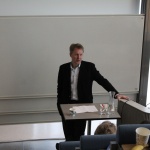Access to banking and finance has long been a symbol of the differences between the world’s rich and the world’s poor. The secret Swiss bank account has been a trope associated with the wealthy elite for over a hundred years and the 2007 financial crisis solidified the idea that banks and bankers worked for the well-off at the expense of the impoverished. However, another idea popularised in the mid-2000s sought to challenge that concept: microfinance.
Microfinance covers a wide range of financial instruments, all oriented at the large numbers of poor people in the developing world. Many do not have access to traditional banking services for many reasons: some because they live in rural areas that are not served by bank branches, others because their concerns are considered to be too small-scale for regular banks and yet more because they receive much of their income in kind rather than in currency. This puts them at a disadvantage compared to people in the developed world that can take out loans to make large purchases or start and expand businesses, as well as take out insurance policies and build up savings. Microfinance was designed to do just that: combine community outreach with internet technology to bring small-scale loans and insurance to the masses. This access to finance and insurance would, in theory, unlock the creative potential of the people in the cashpoor societies across the globe by giving them access to funds and financial instruments to drive their own development.
Microfinance was originally pioneered in the 1970s by the aid arm of the United States government – USAID – with the aim of including many of the developing and newly-independent nations in the global financial system in order to forestall Soviet influence, but was really pushed into the spotlight in the 1980s by Bangladesh’s Dr. Muhammad Yunus and his Grameen Bank.
He introduced many of the ideas now underpinning microfinance, first and foremost that the poor and the unsalaried of the Global South are not inherently uncreditworthy. He widely championed the idea, claiming that it would eradicate poverty in just a generation and save the world.
In the late 90s and early 2000s, the growing movement for microfinance combined with the newly-developing internet and mobile phone technologies to spread that access even further. In 2006 Yunus even won the Nobel Prize for his work on microfinance.
The impact of microfinance on financial inclusion has been significant. Between 2011 and 2014, the number of individuals without access to banking has dropped by 20%, representing a 500 million individuals having banking access. Much of this can be attributed to the expansion of microfinance into the previously underserved areas of the globe. Likewise, microfinance has been shown to increase business creation and occupational choice, rather than increased consumption of impulse purchases. It also has reported high repayment rates – upwards of 95% – though that number may not tell the whole story. From a market-based perspective, microfinance has truly been a success.
However despite such optimistic reports, ten years after Dr. Yunus’s Nobel Prize, the impact of microfinance has not even come close to meeting the high expectations of wiping out poverty completely within a generation. Many of the impoverished areas where microfinance was introduced, such as India and parts of Africa, did not experience any significant poverty reduction.
In some places, such as South Africa and Latin America, it has even contributed to the decay of existing community support structures.
Many microlenders also faced criticism over high interest rates, a for-profit revenue structure and even for concealing or underreporting defaults on payments to encourage further investment. Furthermore, like much of the rest of development efforts, microfinance has been criticized as corrupt and non-transparent, as well as being a vessel for imposing and enforcing the neocolonial division of labour.
It is easy to see why the microfinance movement did not live up to expectation. Poverty is a ‘wicked problem’ that has remained unsolved after millennia of attempts, with no simple solution. Microlending also suffered from an identity crisis: should it be considered a development program, a charity or a commercial enterprise? All three sorts of institutions have conflicting goals, success metrics and norms to which they adhere, producing difficulties for organisations that can act and be seen as any one of the three. And finally, a program designed around bringing access to the global financial market shares its fortunes with said financial market, which is still in the process of recovering from the global financial crisis. On the other hand, the impact of the microlending movement should not be underestimated. Even if it has not solved global poverty, it has given many people in the developing world the access to financial tools and institutions that were previously the exclusive province of the developed world. Whatever one may think of those tools and institutions themselves, microfinance has democratised access to them, which is a great achievement in its own right.
Yaroslav Mikhaylov










